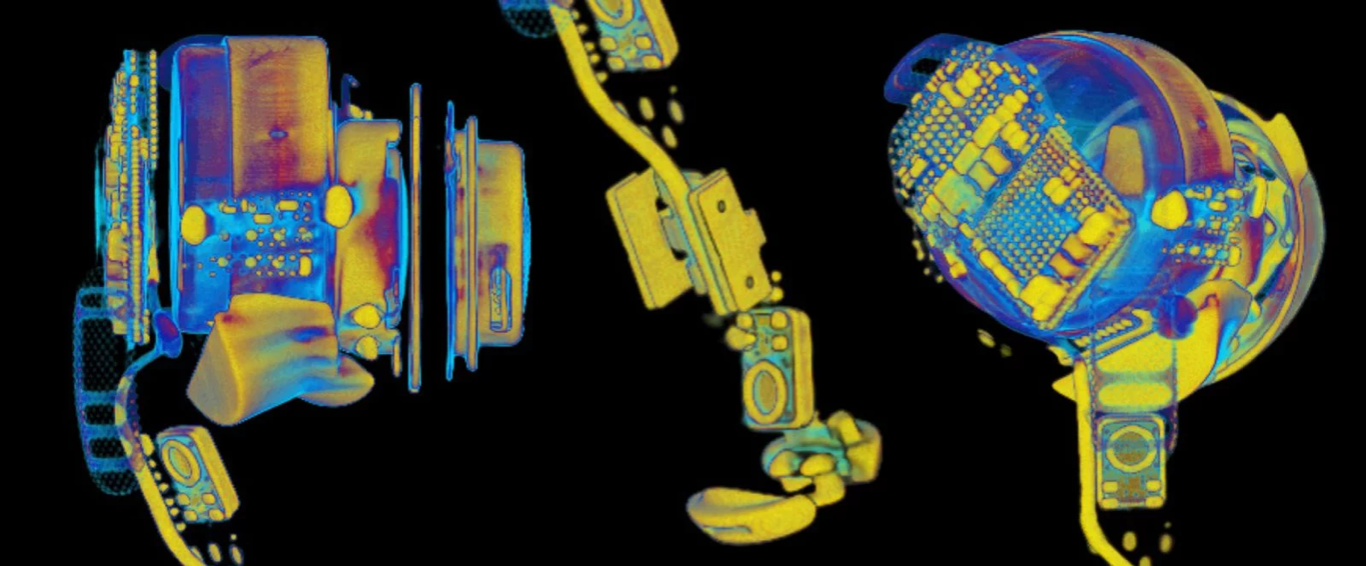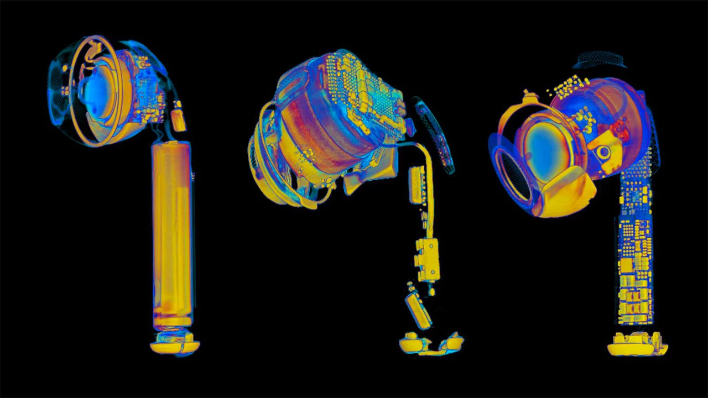Over the years the product has evolved considerably, adding more sensors and new features packed into an ever smaller form factor.
New computed tomography images of the first generation AirPods, AirPods Pro and third generation AirPods have revealed in detail what internal design changes Apple has had to make to include new features in each generation.
The first generation AirPods, announced in 2016, serve as the main design inspiration for AirPods Pro and third generation AirPods. The CT scan shows that the internal battery is the largest component of the first generation AirPods , taking up the entire space of the long stem. The H1 chip from Apple is housed in the headset and, at the bottom, a single downward-facing microphone.
With AirPods Pro, the first update of the true-wireless earbuds since their launch, the company had to completely rethink the internal structure and placement of components. Perhaps the most noticeable change is in the position of the battery .
In the Pro model, the Cupertino company changed the long stem design of the AirPods and classic EarBuds, which means that inserting a battery to provide enough charge in the smaller stem proved to be a real challenge.

To solve the aforementioned problem, Apple has placed the battery in the head of the AirPods Pro. In the head, which has grown in size over the first-generation AirPods, Apple has also miniaturized several components into a single PCB , or printed circuit board, for a smaller footprint. The AirPods Pro also includes Adaptive EQ , which has been enabled thanks to a third microphone placed in the Pro model’s head in front of the speaker.
In the stem, Apple has also repositioned the microphones from the first generation of true-wireless earbuds, placing them higher and not at the bottom of the stem. Removing the battery from the AirPods Pro stem allowed Apple to include touch sensors , allowing users to press the earbuds to pause music, call up Siri, and more.
The third-generation AirPods announced last fall are heavily inspired by the design of the Pro model, but are a mix between these and the standard model in the way they are built in-house. Unlike the AirPods Pro, which features a hollow stem, the CT scan shows that the third generation AirPods stem is filled with components and some sensors distributed in various positions, similar to the first generation AirPods. As in the Pro model, the battery remains in the head of the earbuds along with new skin contact sensors.

Looking ahead, Apple is expected to take a whole new approach with the next generation AirPods Pro.



Recent Comments